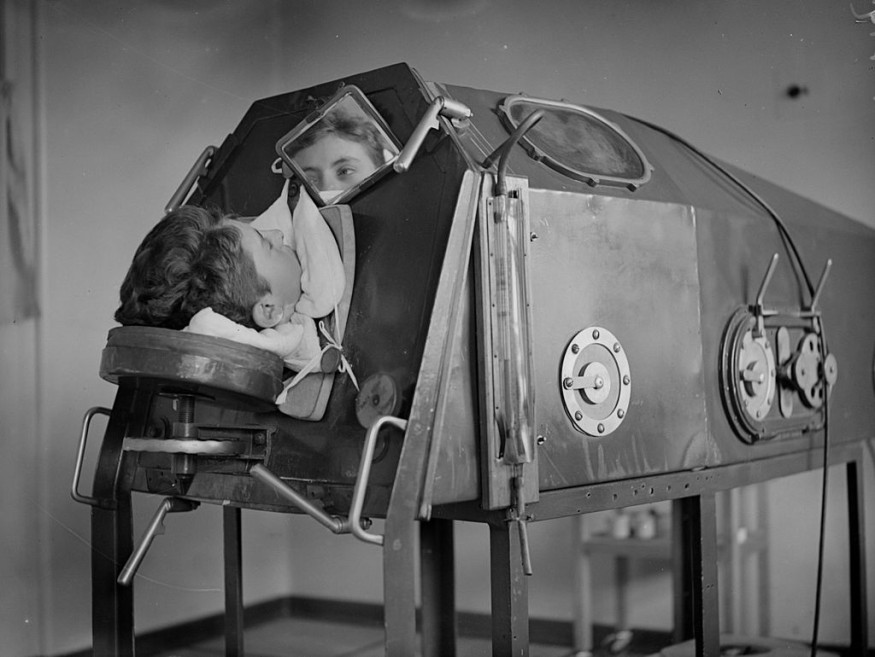At the peak of poliomyelitis (polio) epidemic across Europe and North America, scientists from Harvard University thought of a solution that puts patients in a large metal box attached to bellows that act as a ventilator. They call it the iron lung, which saved thousands of lives in the early 1900s.
Today, only a few polio patients in the iron lung are still alive and one of them is Paul Alexander, who lives in Texas. Also known as "Polio Paul," he has lived inside the large steel ventilator for the past 70 years.

Polio Paul's Iron Lung Story
The iron lung was invented in the 1920s and lined up the wards in hospitals amid polio outbreaks until the second half of the 20th century. By 1959, 1,200 Americans used iron lungs to live, but the widespread distribution of the polio vaccine prevented further cases that also gradually decreased the use of iron lungs.
The US was declared polio-free by 1979 and in 2014, there were only 10 Americans left using the large ventilator. Paul, 75, is one of those who remain reliant on an iron lung and is willing to share his story.
Paul contracted polio in 1952 when he was 6 years old. He lived in suburban Dallas with his family, The New York Post reported. He was paralyzed from the waist down and was rushed to the hospital and placed in the iron lung. Doctors have fewer expectations for Paul's case, given his paralysis and reliance on the steel ventilator.
But he did not surrender and instead became a lawyer when he grew up, albeit he needed to learn techniques and help to go about every day. He even published his first biography, titled "Three Minutes for a Dog: My Life in an Iron Lung," in 2020.
Paul was a lawyer for three decades in Dallas and Forth Worth. He represented his clients in a three-piece suit and modified wheelchair that held his paralyzed body upright, The Guardian reported.
Paul hopes to be around for many more years to inspire others with his story. He added that he wants to accomplish things that he was told back then would be impossible for him.
"I've got some big dreams. I am not going kind to accept from anybody their limitations on my life. Not gonna do it. My life is incredible," he said.
ALSO READ: Africa Is Now Polio-Free! A Momentous Milestone After Decades-Long Efforts
How Does the Iron Lung Works?
Polio was a mid-20th century epidemic that sickened and killed thousands of people each year, according to Smithsonian Magazine. It is caused by the poliovirus that attacks the central nervous system, which results in paralysis in 0.5% of cases. Even the 32nd US President Franklin Delano Roosevelt lost the use of his legs when he contracted the virus in 1921.
Iron lungs were an absolute necessity for those who suffered paralysis of the diaphragm. The first iron lung was invented by Philip Drinker and Louis Agassiz Shaw from the Harvard School of Public Health.
According to Science Museum, the first model consists of a huge metal box with a set of bellows attached at one end to pump air in and out. The iron lungs allowed patients to breathe by creating a negative pressure through a vacuum to suck oxygen in and trigger the lungs to expand so patients could breathe. This process is called the External Negative Pressure Ventilation (ENPV).
When the pressure of the box falls, that is when the patient's lungs automatically expand to draw fresh air into the diaphragm. Butt when air pressure rises, the patient's lung deflates to push air out of them. The rhythmic "whoosh" of the machine is a reassuring song that the patient is breathing.
The design was upgraded by John Haven Emerson by making the bed slide in and out of the cabinet and adding portholes to the sides, thereby improving access to the patient with the loss of air pressure. The original design by Drinker and Shaw was patented under US Patent no. 1906453, 1933.
Watch an interview of Paul below by Gizmodo.
RELATED ARTICLE : Africa Once Again Battles Polio Outbreaks After Two Years of Declaring Free From Any of Its Types
Check out more news and information on Polio in Science Times.
© 2025 ScienceTimes.com All rights reserved. Do not reproduce without permission. The window to the world of Science Times.











